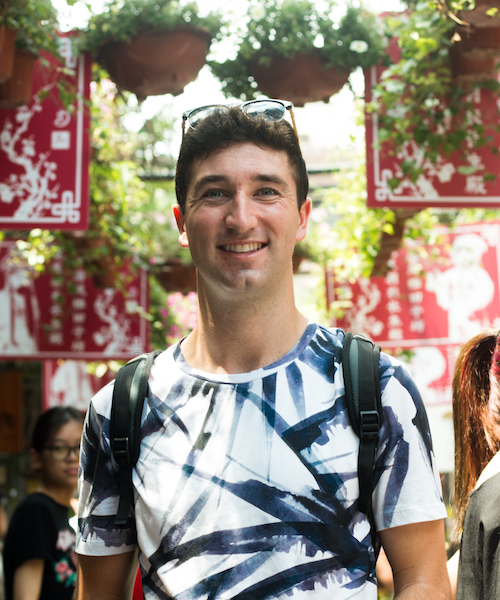
Developing Mutual Understanding in an Interconnected World
Yunxin Wang | June 1, 2018
Responding To: Living in a Digital Age: How Young Chinese and Americans Can Employ Innovation to Resolve Global Issues
Chenyu Wu
Connectivity, generated by amazing technological advancements is blowing the world’s mind by offering greater efficiency and promoting solutions for stubborn global problems. However, issues can also evolve under this increasing connectivity. To name one example, terrorism. It is acknowledged that the Internet and various digital platforms are empowering terrorists for recruitment, training, and organization, and young people are especially exposed to dangerous thoughts on the Internet.
Indeed, states have been fighting this “internet terrorism” largely through sharper monitoring of the cyber environment, like the Obama administration’s collaboration with tech companies to “clamp down on extremists’ use of social media” and China’s similar activities. Yet, measures like deleting terrorists’ social media accounts are not producing impressive outcomes because terrorist organizations have the flexibility to switch between diverse information channels and camouflage. With the aid of new technologies further efforts are paid in strengthening safeguards and pre-crime inspection, but it has failed to prevent the increasing “lone wolf” attacks from happening, which were particularly inspired by digital terrorism. As long as a targeted population for Internet terrorism remains vulnerable, extreme thoughts have the soil to grow and spread.
In dealing with such a global issue originating from, let’s say, digital innovation, countermeasures utilizing traditional logic such as “stopping and disrupting” can only solve part of the problem. Here are some thoughts about how we can better address the problem using innovation, not just of technologies but also of ways we communicate and interact with the world.
The initial step is to identify the vulnerable with the help of tech innovation. Think about when Facebook or Taobao recommend articles or items that somehow perfectly fit your interests, and you may realize just how mature technologies such as big data analysis and machine learning are in studying user preference and doing behavioral targeting advertising. The same technologies can be used in scanning people’s shared photos or opinions, liked music, and activities cross-compared with information like age, education level, and location to narrow down an existing or potential audience, even before they know it themselves.
Such identification is not meant to label an audience as “potentially dangerous,” but to help them by tailoring a counter-narrative presentation against terrorism, as it is referred to. Nowadays when the channels of communication are diverse, the old-fashion school counseling or family dinner talk may not always be effective. Blogs, short videos, games, hashtag campaigns, and organized open debates are all available to reach such young people who need help, and its according to their preference.
More importantly, person-centered story sharing via “we media” and flexibly organized events like TEDx have arisen as an accessible way for people to carry out ideas and build influence, which is also an approach that should be employed. For example, having a former terrorism fighter or survivor talking about how poisonous extreme thoughts are and how to build self-defense against them in a community sharing event can have a much bigger influence than preaching or mind-correcting.
And, this is not a one-way road. From what we have already seen, people deceived by the appeal of terrorism are more likely to be troubled and ignored in real life, whether they are second- generation immigrants living at the fringe of U.S. society or Chinese ethnic teenagers isolated from good education and opportunities. Public awareness of their situation can also be raised by the above approaches.
For certain, knowing who is vulnerable and how we can reach them is not enough. Fighting Internet terrorism requires human resources, money, academic support, organizing capacity, etc. But, our advantage is that connecting worldwide, talented people through various associations for common goals and capacity training (like the program we are participating in now) is becoming a trend, and enables us to provide experience, funding, and knowledge for combating Internet terrorism locally and internationally.
There are already some practices such as the massive global online brainstorm called “Debating Security+” held every year to yield practical recommendations for issues including global terrorism. Another platform is a website called “Counter-Narrative Toolkit” which provides guidance for communities in creating messages against extremist content. There is more Chinese and American young people can do in strengthening this coalescence.
Increasing connectivity itself is not necessarily positive since problems may also be exasperated in a deeply networked world, as illustrated by Internet terrorism. To solve the pressing issues emerging in this age, it is necessary for us to employ advanced technologies, and more importantly, creative methods and conceptions we have invented under this new connectivity to better communicate and cooperate with each other. Having a broader understanding of innovations and transferring our knowledge in problem-solving is how we, as the so-called digital generation, can make a bigger difference.
Chenyu Wu is a junior at the University of International Relations in Beijing, majoring in international politics.

Yunxin Wang | June 1, 2018

Michael Mullaney | May 30, 2018

Hongjin Xu | May 29, 2018

Cynthia Wang | May 28, 2018

Ruolin Zhao | May 27, 2018

Yamillet Payano | May 24, 2018

Jessie Dalman | May 23, 2018

Haile Chen | May 22, 2018